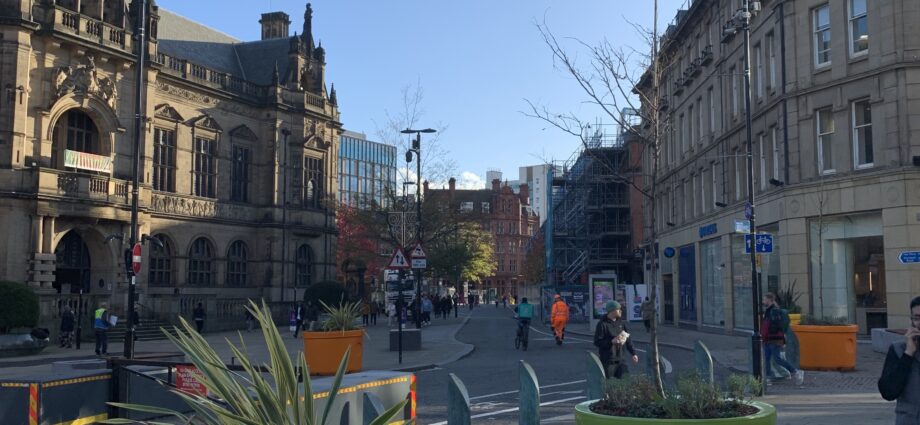I was recently able to visit the city of Sheffield, located just above the Midlands and at the beginning of England’s north, sprawling out in the South Yorkshire region. Sheffield was one of the major players in the industrial revolution and became home to some of the world´s most important steel manufacturers during the 19th century, having developed stainless steel and crucible steel locally.
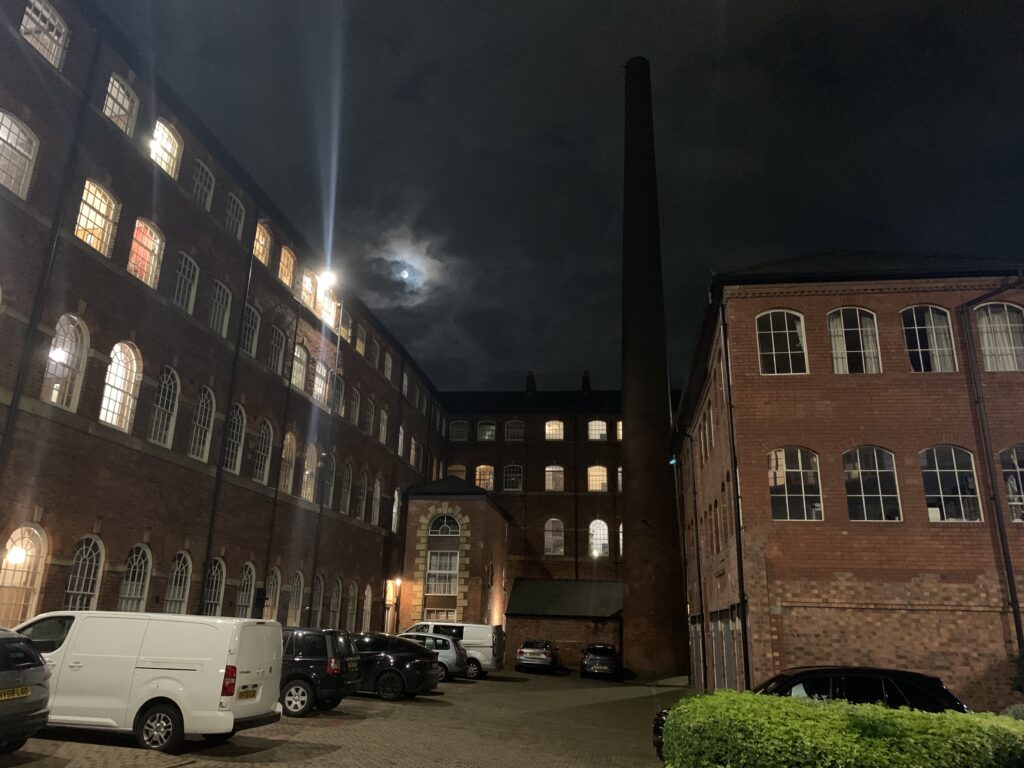
The local council in collaboration with their local archives and library has recollected a very interesting and very well-summarised version of the city’s history here. As a working-class area, it has nearly always been dominated by labour governments, with the exception of two periods (1999-2001 & 2008-2011) when the Liberal Democrats controlled the council.

The dominance of labour has had a certain impact on the way industrial heritage is valued within the city and amongst the local population. Especially remarkable are some parts of what is known as Kelham Island that have kept industrial buildings with their cobbled streets intact, even after being transformed into residential areas. Places and buildings like these have been protected thanks to community-based organisations such as Joined Up Heritage Sheffield who are also behind Sheffield’s Heritage Strategy (2021-2031).
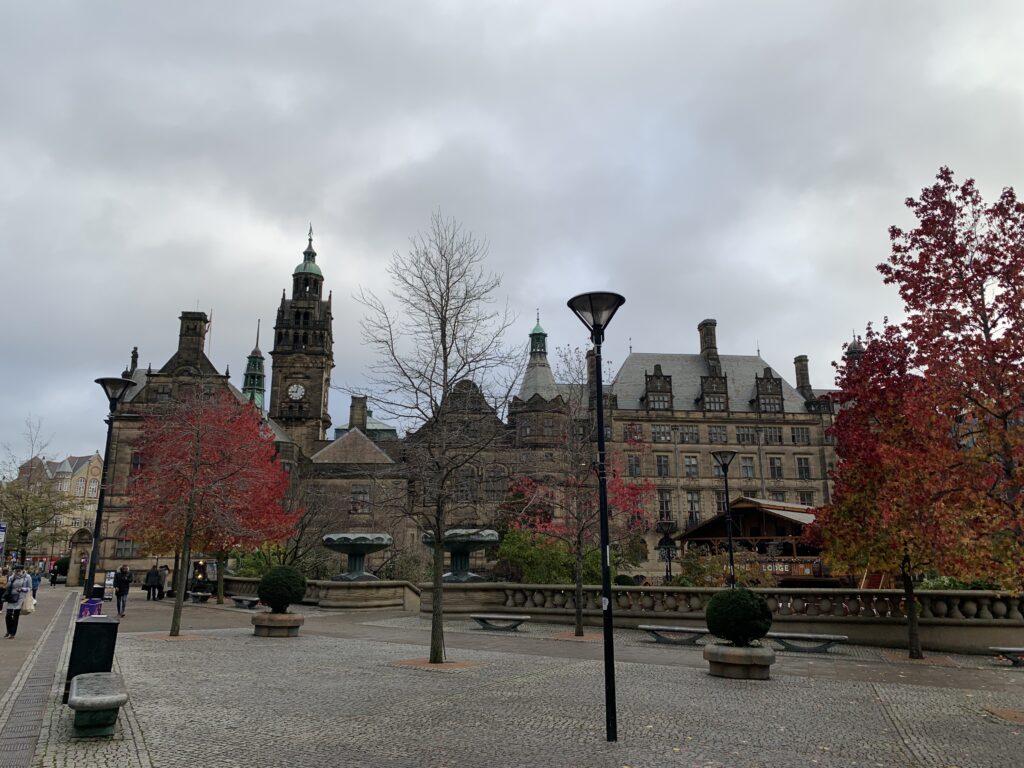
As I came across the impressive building that hosts Sheffield Town Hall, built in local stoke stone, I was able to spot a plaque dedicated to the people from Yorkshire that joined the international brigades and went to Spain to fight for democracy, a beautiful testament to the importance of signs and plaques within our city that tie places and nations in unexpected ways.
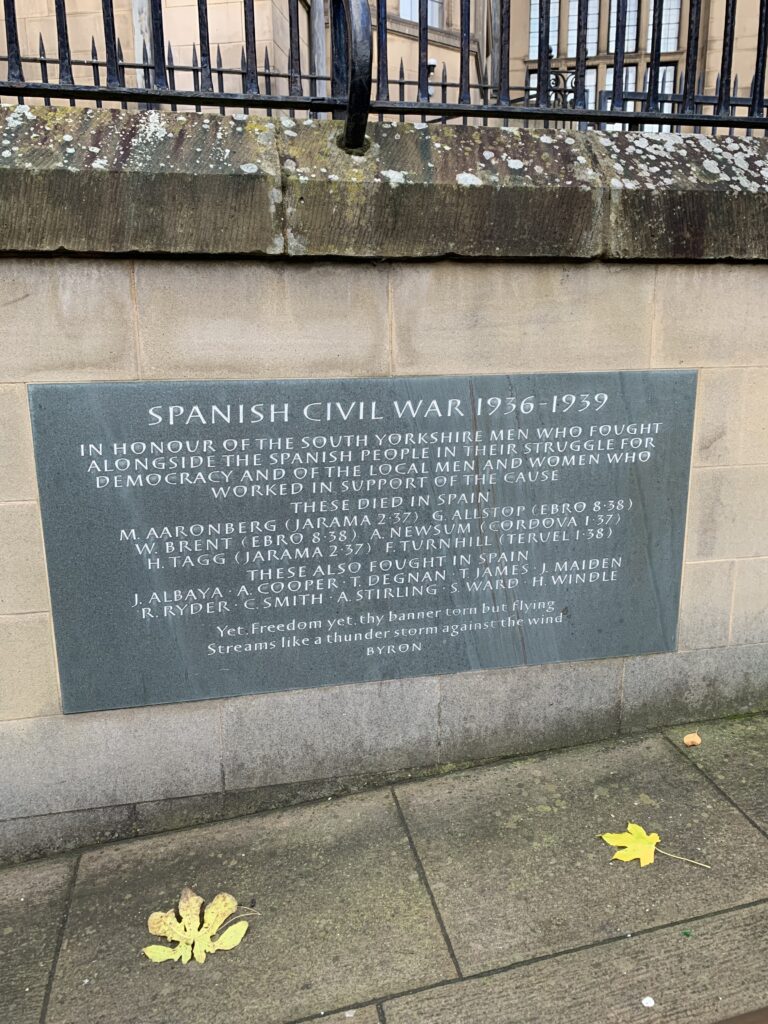
All over the city centre you can also spot constant references to their industrial pride, the town hall itself is adorned with friezes that depict the industries of Sheffield and its interior holds a public exposition of locally forged silverware. A few metres away and next to Sheffield City Hall, a neo-classical style building with a giant portico adorned with regional steel gates, you can also find a statue to the women that worked in the munition factories during the second world war.

The city was labelled the most sustainable city in the UK in a report commissioned in 2021 by NatWest Bank and led by Professor William Powrie from the University of Southampton. Although the only reference to the actual report is a webpage, green spaces and renewable energy are the main factors behind this title. Sheffield has over 22.600 acres of green space, which occupy an outstanding 61% of the city, pushing it to first place in urban green spaces in the UK, Europe and possibly the world.
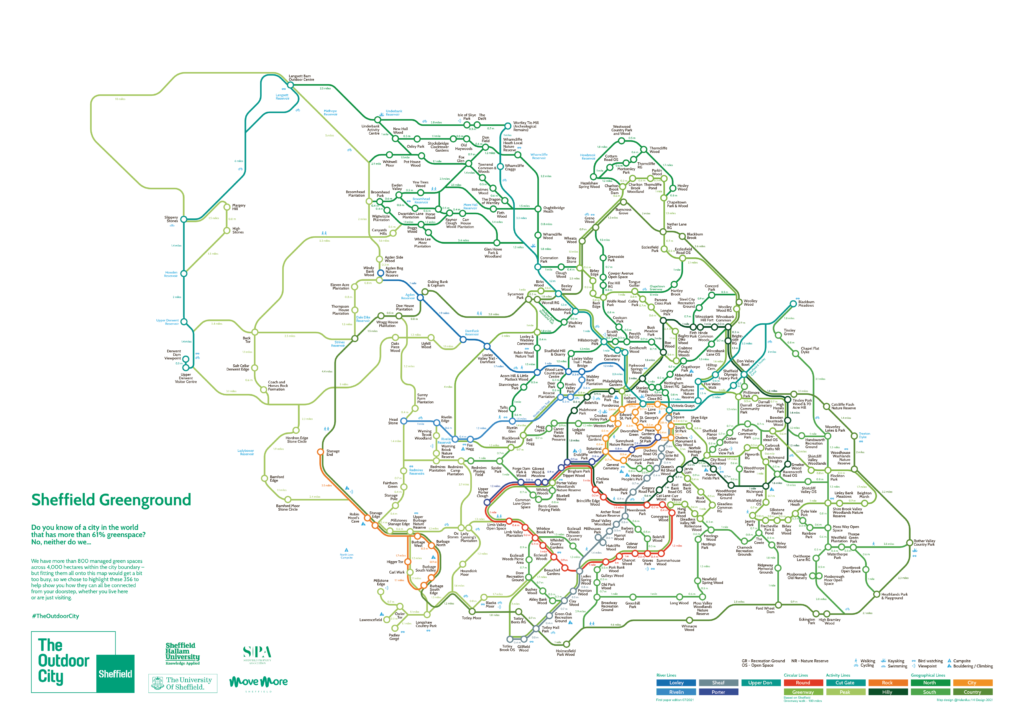
It is estimated that the city has around 4.5 million trees and boasts 800 managed green spaces within the city boundary, which has recently been highlighted with a tube style map that represents 356 of these spaces as a visually impactful display. Other projects such as Grey to Green have also had a positive impact within the city in response to flooding and pollution by creating new and resilient inner-city green designs and a monthly flower market called Pollen.
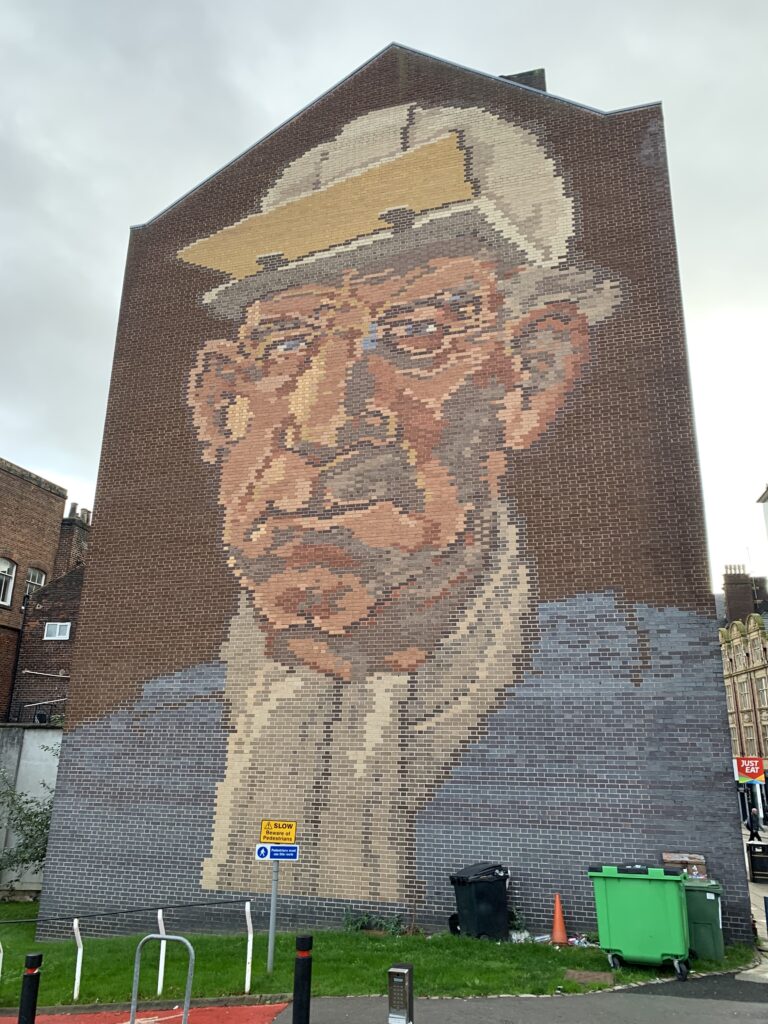
Sheffield has over 22.600 acres of green space, which occupy an outstanding 61% of the city, pushing it to first place in urban green spaces in the UK, Europe and possibly the world.
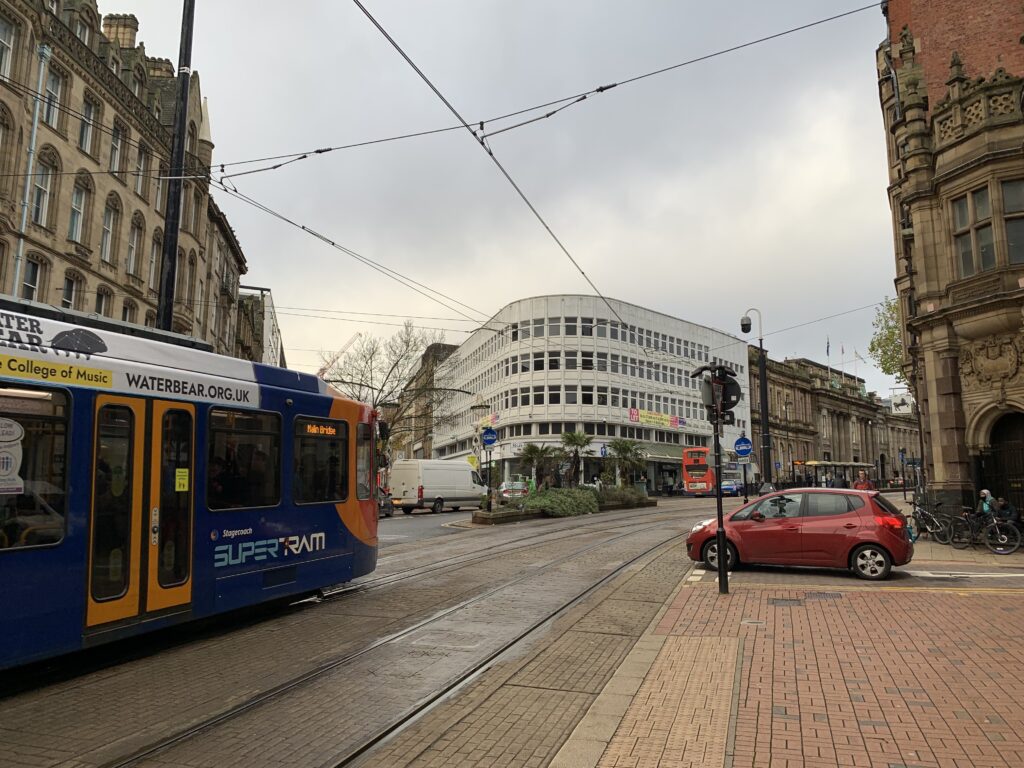
Public Transport is also an essential part of Sheffield’s Green City Strategy that will need to be evaluated as they work on their new transport strategy. They anticipate an overall growth in public transport by 20% which will be taken up mostly by local bus services and the Sheffield Supertram.

The famous tram covers 29 Km and has three light rail routes that were built mainly on several existing heavy rail tracks throughout the city. As many public transport systems in the UK, it was unfortunately privatised in 1996 and has since experienced different periods of expansion and decline.

After recent changes in perception of public transport in the UK, with data showing over 67% of the population supporting nationalisation of rail operators, the local council announced that as the contract comes to an end in 2024 the tram will once again become a publicly owned company.
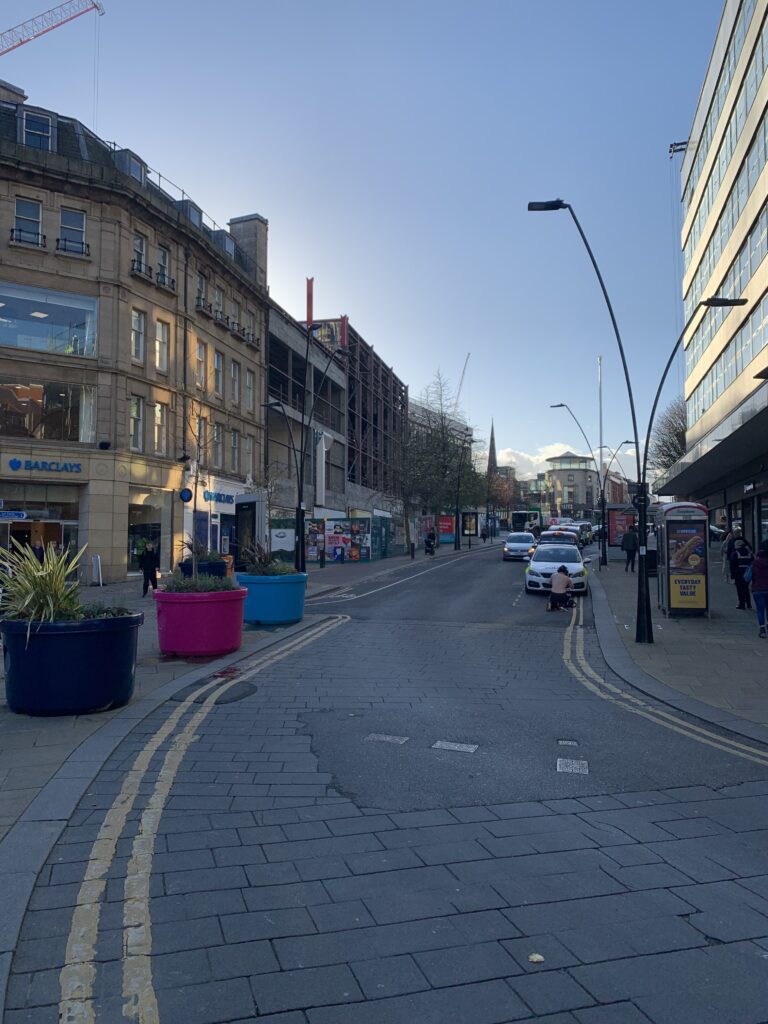
Sheffield’s main plans for transport will focus on what has been called Connecting Sheffield, which will host a wide range of consultations and funding opportunities for new and safer routes for walking, cycling and public transport. You can already see how few cars enter the city centre, clearly reflected in some of the photos I took (above and below) on a weekday at around 14:00 pm
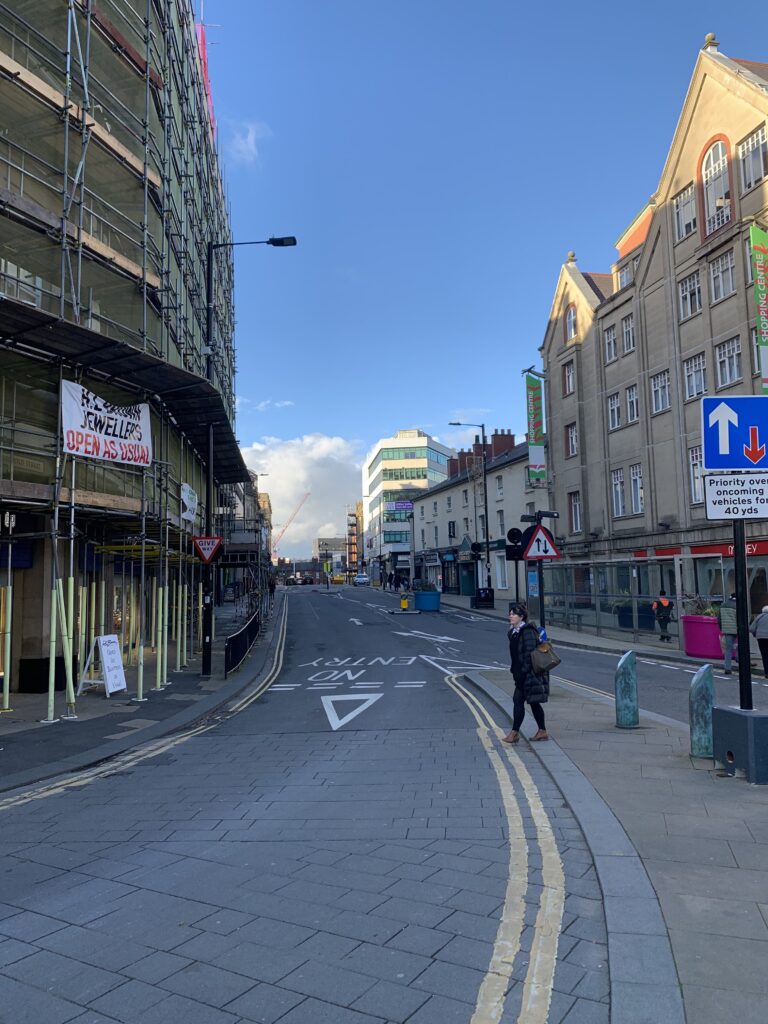
Public Transport is also an essential part of Sheffield’s Green City Strategy that will need to be evaluated as they work on their new transport strategy. They anticipate an overall growth in public transport by 20% which will be taken up mostly by local bus services and the Sheffield Supertram.

The Green Estate CIC
The Green Estate is located just a 30-minute walk or a 20-minute bike ride from Sheffield City Centre. Our group was taken by bus and we were able to go over the estate’s history, current projects and strategies for the future with some of the workers, like Ted Talbot and the CEO, Sue France of the community-based organisation.

This area encompasses historical estates that were built as part of habitational solutions for its expanding industry workers that, until then, had mostly lived in city slums. Between the 20s and the 60s, they gradually built up these estates as new suburbs with social housing that allowed the council to move workers out of the slums. With the decline and closure of major industry during the 70s and 80s in the UK, high levels of unemployment and total institutional abandonment amongst a mostly working-class neighbourhood led to increasing levels of deprivation. The estate reached one of its worst moments in 1995 as a local school was burnt to the ground, leading to a local MP to name-shame the area as the “worst estate in the UK”.
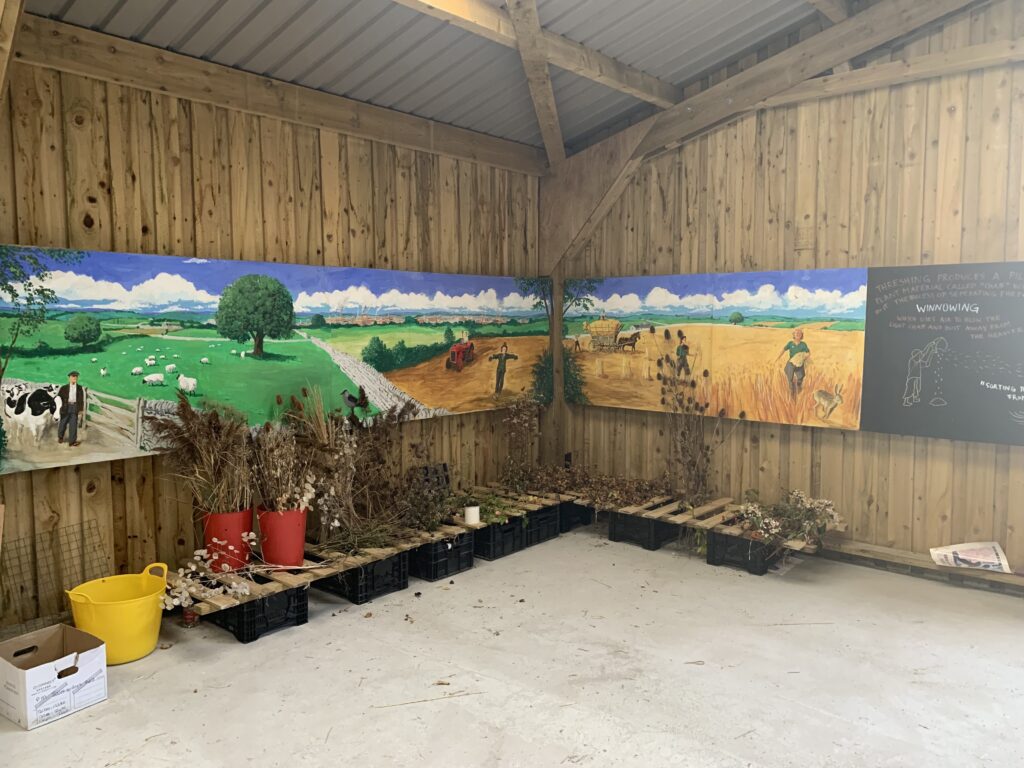
Although the area was far from being the worst estate in the country, the labelling turned it into a target for regeneration and funding from the government and regional charities. You can find out more about the history of this social housing development at the amazing blog run by John Boughton “Municipal Dreams” (Also a book) which has been documenting the past and present of social housing in the UK. Here is a link to the history of Manor Estate.
“In the old days, I remember one weekend that around 130 cars were burnt in our fields, it seemed that it had to do with a football match, with all the hooliganism going on back in the day. They had taken the cars from the opponent’s team and taken them to manor estate to burn them”
-Comment by an Estate Worker
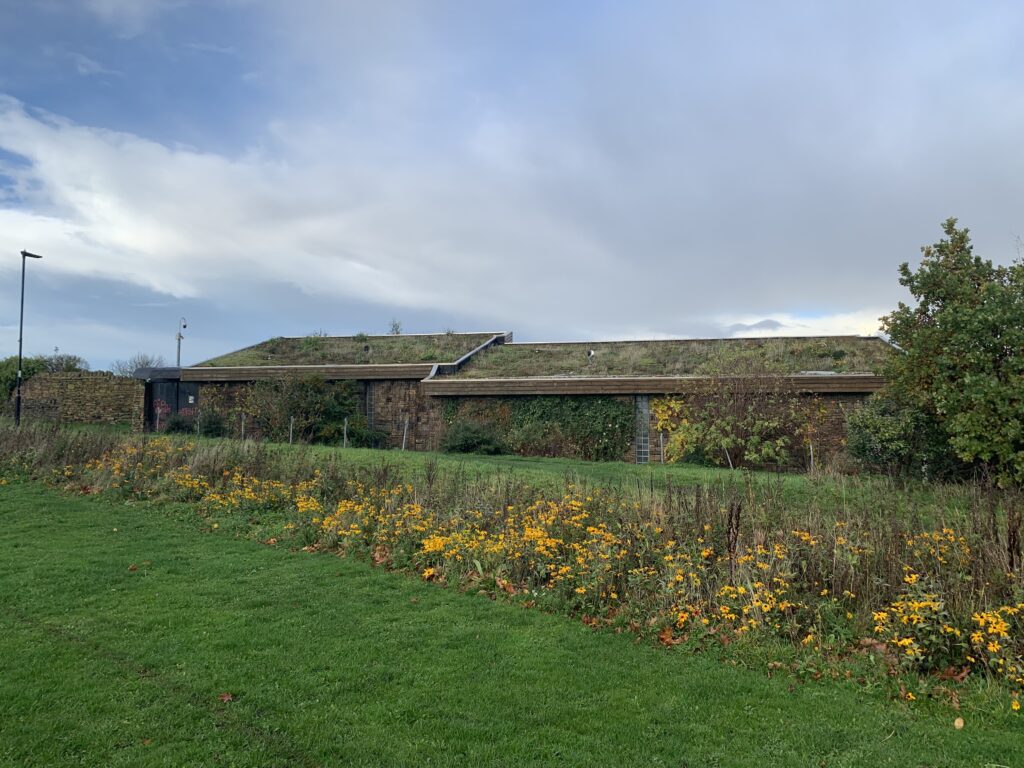
In 1998 the Manor Castle Development Trust and SWRT set up a heritage and environment project called the Green Estate Community Interest Company (CIC). This Community organisation would take over and manage green and abandoned space that existed within the Manor Estate.
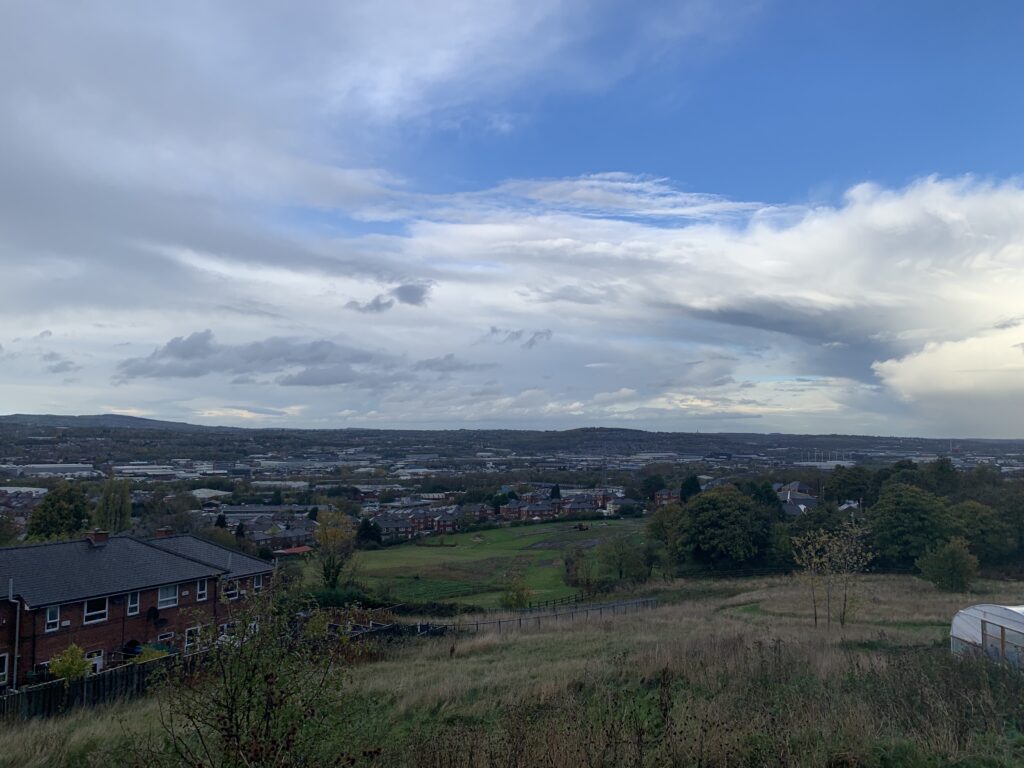
Since then they have built up a reputation, rewilded the area and won numerous Green Flag Awards. They now work on 4 public parks and 2 gated spaces that cover around 43 hectares of land. The area we visited is called the Manor Fields Park and occupies 21 hectares and has been turned from a wasteland into a natural park.
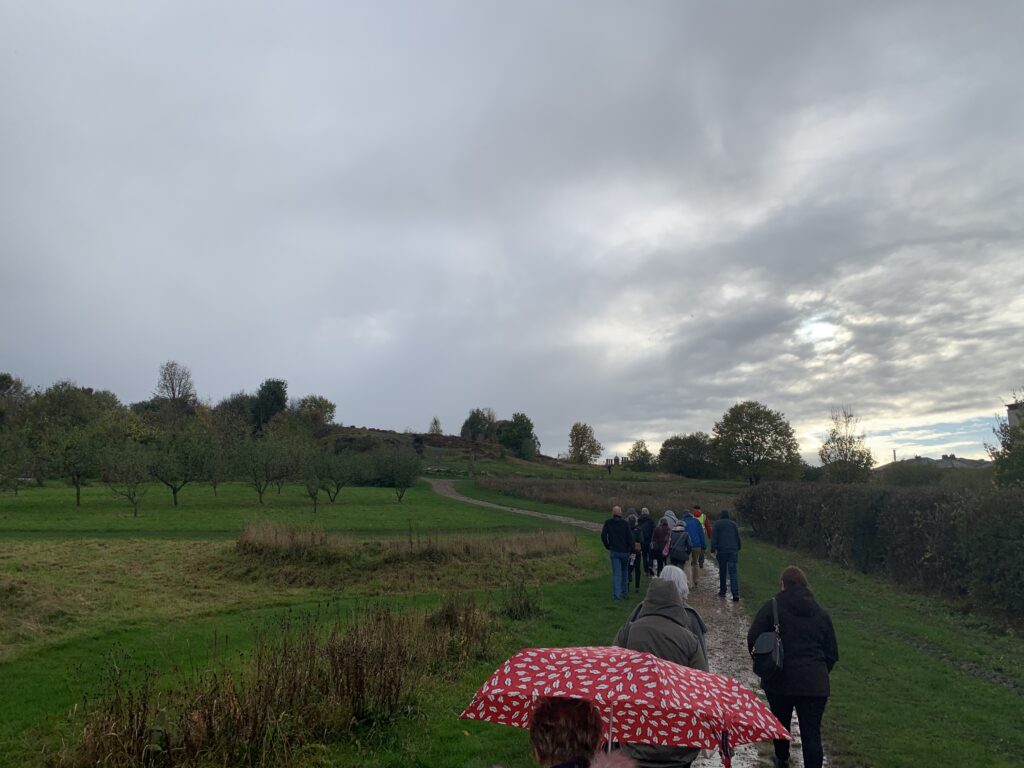
This park is currently owned by the local council but is leased on a long-term basis to the Green Estate. Here they have started with what they call “the accessible and the Beautiful” which works around the idea of opening spaces for the community, local schools and residents and creating wild and natural displays that are valued by their neighbours. Once this has been established the idea is to move on to other wider services that are more linked to systemic change within the city.
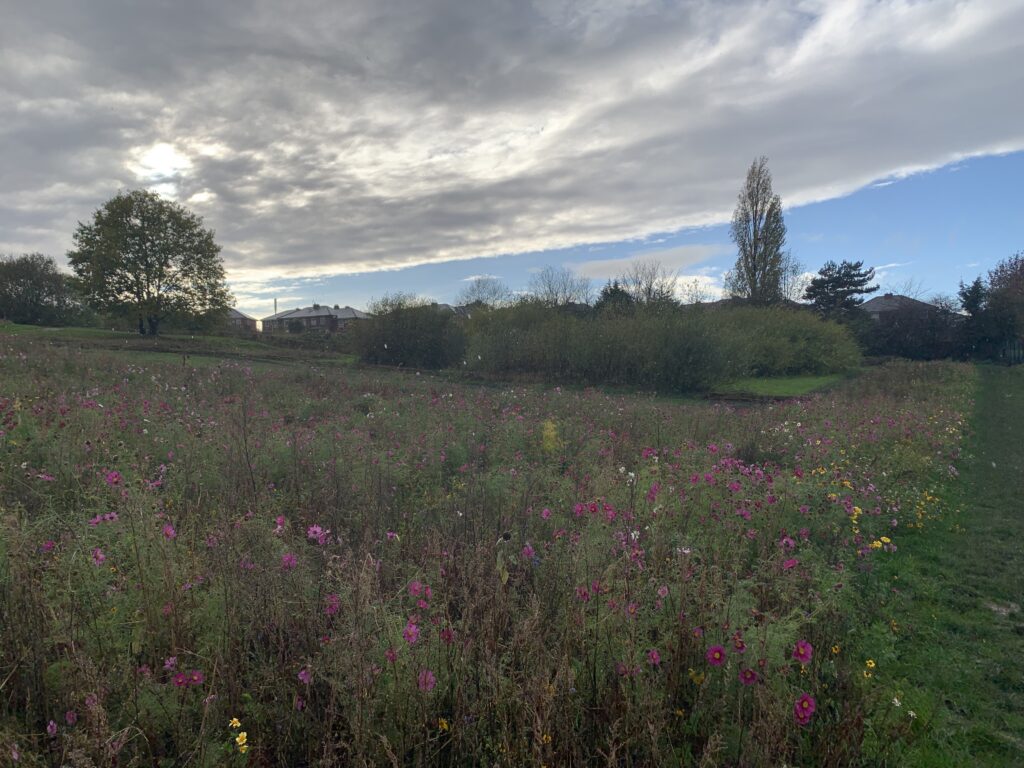
They currently provide services like horticultural tunnel therapy, the recollection of local urban green waste (which they transform into peat and resell for £3 pounds a pack) or landscaping services which includes an amazing “spin-off” service called Pictorial Meadows. The latter recently had the honour of being hired to set up a wild meadow in the Tower of London´s moat last summer.
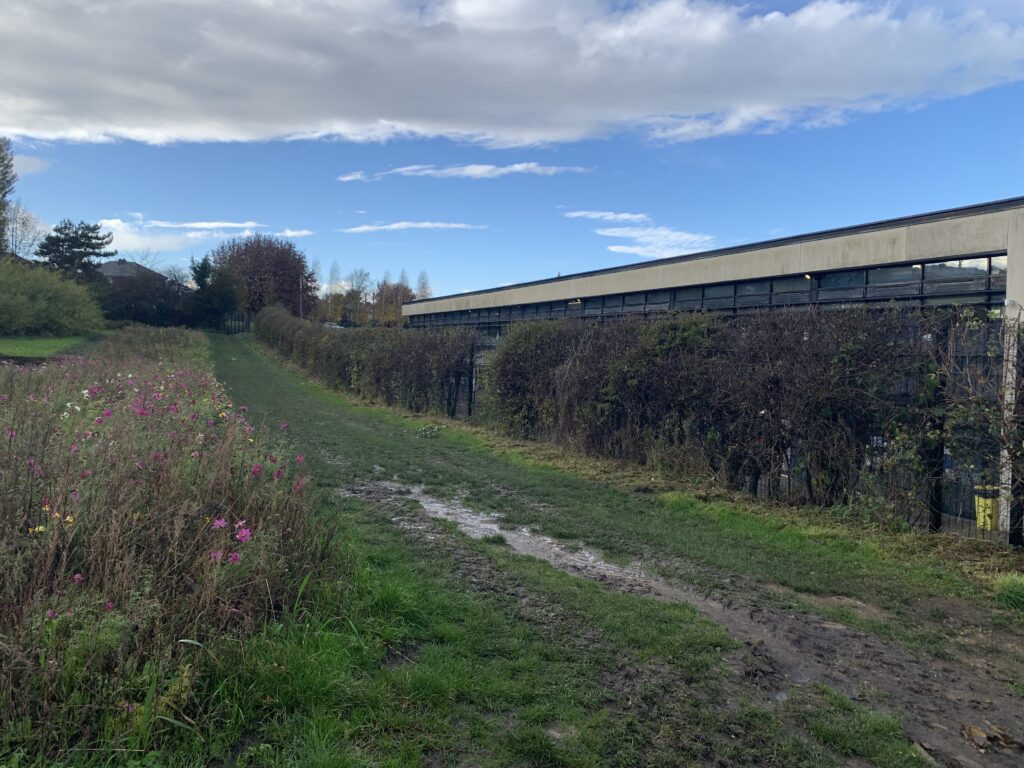
The CIC also has an adaptable, but elaborated strategy “Green Estate Strategy 2030” that includes a “vision of the world where all urban places are engaging, adaptive and resilient”. The project now boasts 74 hired staff and a £2.4 million turnover. They are extremely proud of the role they have played in the regeneration of the neighbourhood and plan to start conversations with the colliding school for them to open a gate that can allow children to enjoy their amazing natural meadows.

Alan is an ex-chef, he studied political science and has an MSc in Sustainable Cities. Activist for change, he has worked with refugee NGOs in Seville, as policy officer in local government and is currently involved in a unique community project called Local Trust.
View content by Alan here.
Learn more about the Global Walkability Correspondents Network here

